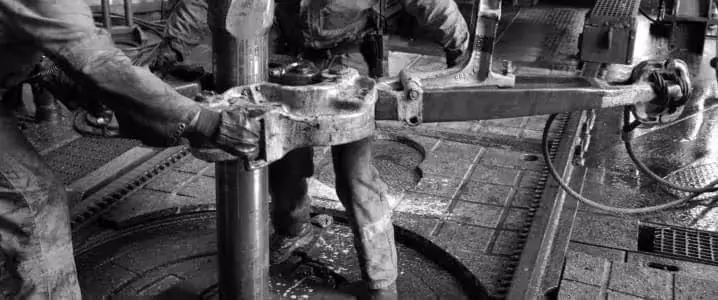By Tsvetana Paraskova - Jul 31, 2024, 5:00 PM CDT
- Employment in the U.S. oil patch as fallen for 5 out of six months so far this year.
- Operational efficiencies allow operators to continue to boost production with fewer rigs and workers.
- In a cautionary note, TXOGA said that newly released data from the Texas Workforce Commission indicates upstream oil and gas employment fell again in June, with the number of jobs dropping by 2,000 compared to May.

U.S. oil production is breaking records, but employment numbers have dropped in five out of six months this year as operational efficiencies allow operators to continue to boost production with fewer rigs and workers, the Texas Oil & Gas Association (TXOGA) said last week in a cautionary note. Texas, home to the biggest shale basin, the Permian, has seen crude oil production grow this year, and the share of Texas of total U.S. production has further increased, according to data from the industry association. However, the latest employment data in the upstream sector indicates that exploration and production companies are boosting productivity and efficiency without necessarily growing workforce numbers. In a cautionary note, TXOGA said that newly released data from the Texas Workforce Commission indicates upstream oil and gas employment fell again in June, with the number of jobs dropping by 2,000 compared to May. This marks 5 out of 6 months this calendar year that the job count has dropped, TXOGA noted. This is in stark contrast with the upstream job data for March, when data from the Texas Workforce Commission showed employment in the upstream sector of the Texas oil and gas industry grew by 4,500 jobs in March, representing the highest single-month growth in upstream jobs since June 2011. Between the COVID-low point in employment numbers in September 2020 and March 2024, months of increase in upstream oil and gas employment in Texas outnumbered months of decrease by 33 to 9. Related: Oil Prices Spike After Hamas Political Leader Killed in Iran But this year, 5 out of 6 months have shown declines in upstream employment. That’s mostly due to greater efficiency, TXOGA says. “Operational efficiencies are driving strong production with fewer rigs, which can translate to declining industry job numbers,” TXOGA president Todd Staples said in a statement. Baker Hughes data indicate the national rig count declined by about 14% between June 2023 and June 2024. At the same time, the U.S. Energy Information Administration estimates rig productivity gains of more than 20% year-over-year across major shale basins, with many companies maintaining or increasing production despite running fewer rigs. “Clearly, oil and natural gas companies are delivering more energy with greater efficiency and lower emissions than ever before,” Staples said. Meanwhile, Texas’ oil and natural gas production gained market share in the first half of 2024, with TXOGA projections through June 2024 showing that oil production in Texas has remained historically strong at 5.7 million barrels per day (bpd), TXGOA Chief Economist, Dean Foreman, wrote in the association’s monthly energy economics review. TXOGA estimates that Texas produced 42.8% of U.S. crude oil and 28.3% of U.S. natural gas marketed production in June 2024, gaining market share from 42.7% for oil and 27.9% for gas at the end of last year. The Permian is set to continue raising oil production, although at a slower pace compared to the past two years, analysts say. Last week, Goldman Sachs Research said in an analysis that the Permian is headed for slower – but still robust – growth, as technological and efficiency gains will keep driving production higher. “The annual average production growth in the maturing Permian basin is likely to gradually decline from an exceptionally strong 520,000 barrels per day in 2023 to 340,000 barrels per day this year, and to a still robust 270,000 barrels per day in 2026,” Yulia Grigsby, an energy economist in Goldman Sachs Research, wrote. Efficiency is one of the key reasons for continued growth in Permian oil production. “Drilling and completion efficiency continues to improve via lower drilling costs and shorter drilling and completion times,” Grigsby said. “This year, every stage of a well’s building cycle in the Permian was 20-50% faster than in 2019, with the total average time from rig to production decreasing by a third to 63 days.” This acceleration will boost the share of new and productive wells amid the stock of declining wells, Goldman Sachs says. By Tsvetana Paraskova for Oilprice.com More Top Reads From Oilprice.com:
- API Reports Large Draw in Crude Inventories
- Russia’s Crude Oil Shipments Plunge to 11-Month Low
- OPEC: Oil Is Indispensable for Global Electrification
Download The Free Oilprice App Today

Back to homepage
![]()
Tsvetana Paraskova
Tsvetana is a writer for Oilprice.com with over a decade of experience writing for news outlets such as iNVEZZ and SeeNews.
More Info
Related posts
Leave a comment
















